Figs are one of those Mediterranean-inspired crops that give us a holiday feeling without leaving the garden, and pruning them right is key. RHS advisor Adrian Thorne explains how to prune figs trained against a support or in a pot
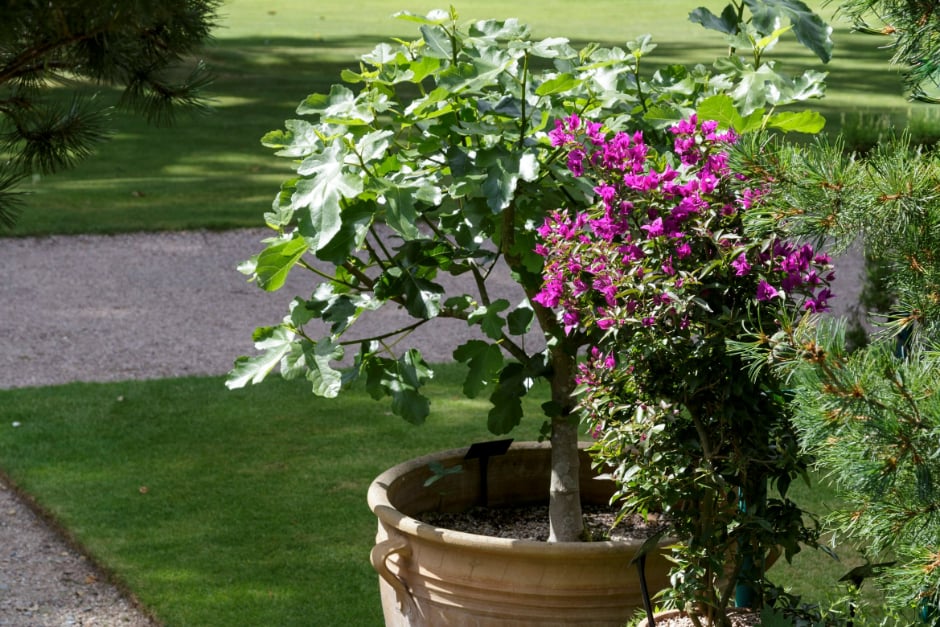
 Seeing the stems of my fig trees pruned and ready to go gives me joy, knowing that soon, they’ll be smothered in their characteristic architectural foliage. Figs are one of those plants that really benefit from pruning, to let in extra light and encourage more fruit.
Seeing the stems of my fig trees pruned and ready to go gives me joy, knowing that soon, they’ll be smothered in their characteristic architectural foliage. Figs are one of those plants that really benefit from pruning, to let in extra light and encourage more fruit.
The major pruning work on figs is carried out in spring once the frosts have passed, so around April is perfect in the south of the UK, or May further north. I also like to revisit the trees in early summer as well, for a little thinning out.
I mostly use secateurs, and perhaps a pruning saw. Gloves are important, as the sap can be an irritant if it reaches bare skin. I favour a saw over loppers for the thicker branches, as I can get a cleaner cut, but the choice is yours. If your plant is taller than you, start at the bottom and work up, so any sap that drips doesn’t fall on your head (and wear a hat!).
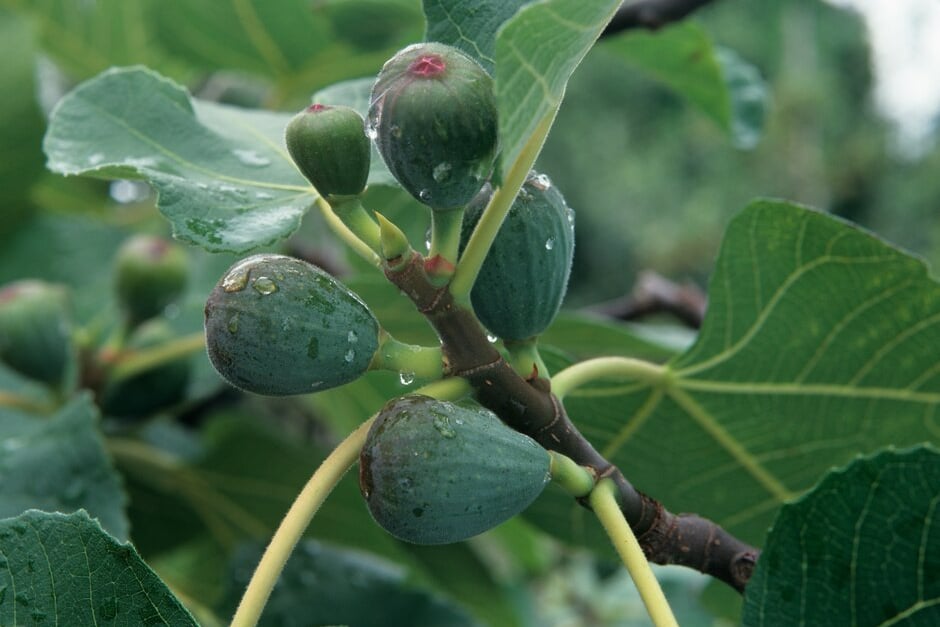 Firstly, remove any dead, damaged or diseased material – healthy shoots stand a better chance of producing healthy fruit. Dead, damaged and diseased material also casts shade on more useful shoots, detracts from the look of the tree, and can act as an entry point for disease.
Firstly, remove any dead, damaged or diseased material – healthy shoots stand a better chance of producing healthy fruit. Dead, damaged and diseased material also casts shade on more useful shoots, detracts from the look of the tree, and can act as an entry point for disease.
Next, I thin out the shoots off the main framework stems, to let air and light into the plant. For my fan-trained plant, this means any new leafy stems growing forwards or back towards the wall. The only reason not to remove these is if I can ease them sideways to tie into a gap on the supporting wires.
For a container plant, thinning out means keeping the centre of the bush open like a bowl. I may also decide to use a strong new stem to replace an old one, especially if it is better placed. I aim to remove about a third of the stems.
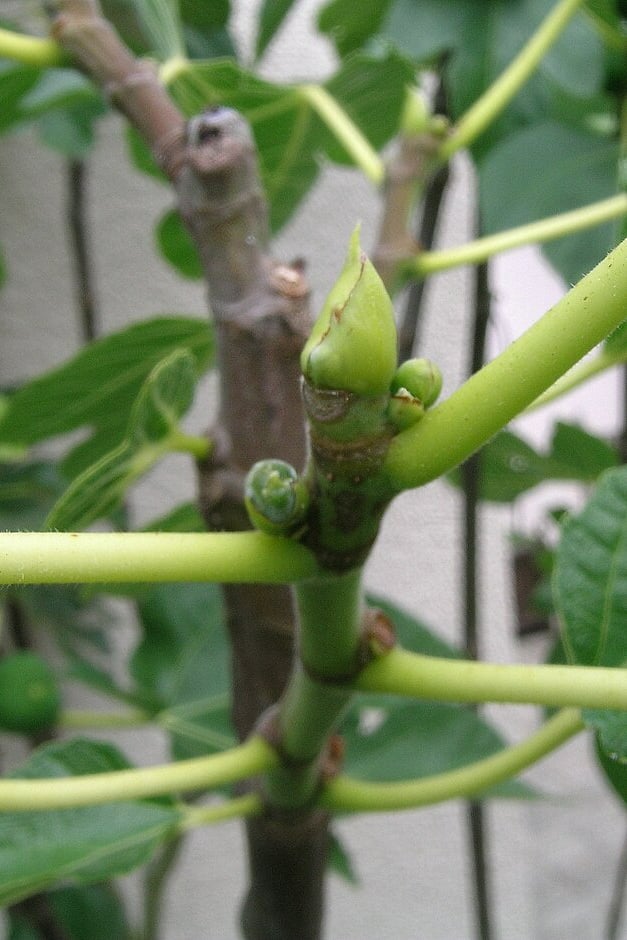 As a rule, either prune shoots back hard to the old growth, or leave them untouched. However, the most important thing to bear in mind is where the immature figs are. Your crop for this year is already on the plant – in the form of very small figlets, hardly as big as a pea (visible in the nodes in the image).
As a rule, either prune shoots back hard to the old growth, or leave them untouched. However, the most important thing to bear in mind is where the immature figs are. Your crop for this year is already on the plant – in the form of very small figlets, hardly as big as a pea (visible in the nodes in the image).
You’ll find these on the tips of the growth that the plant put on last year. The figlets will have started forming in late summer last year, so you want to keep plenty of the smaller, compact shoots that bear them.
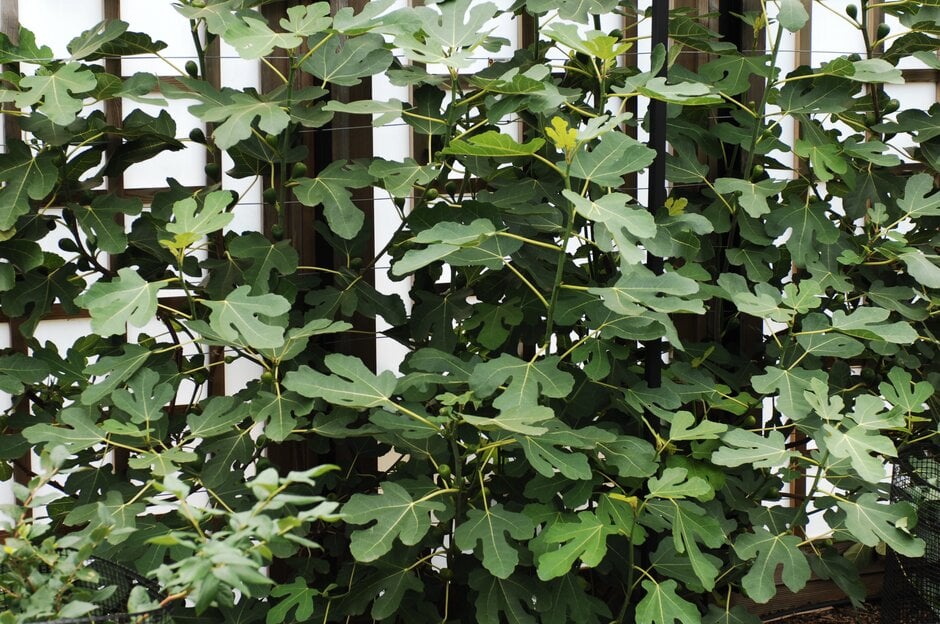 I come back to the plant in summer for a little tidy-up. Figs can produce vigorous growth after pruning – these long, whippy shoots can be a nuisance and don’t look great. Unless they are useful for the future as part of the framework, I prune these hard to 5-8cm.
I come back to the plant in summer for a little tidy-up. Figs can produce vigorous growth after pruning – these long, whippy shoots can be a nuisance and don’t look great. Unless they are useful for the future as part of the framework, I prune these hard to 5-8cm.
I also pinch back the now-growing shoots to 5 or 6 leaves, wearing a glove. This will stop the growth of the shoot and side shoots will then start to form. Most importantly, the figlets for next year will develop in the leaf axils.
The images below show a wall-trained fig before and after pruning. Note the thinned-out stems, especially where there was congestion, removal of suckers from the base, and framework kept close to the wall.
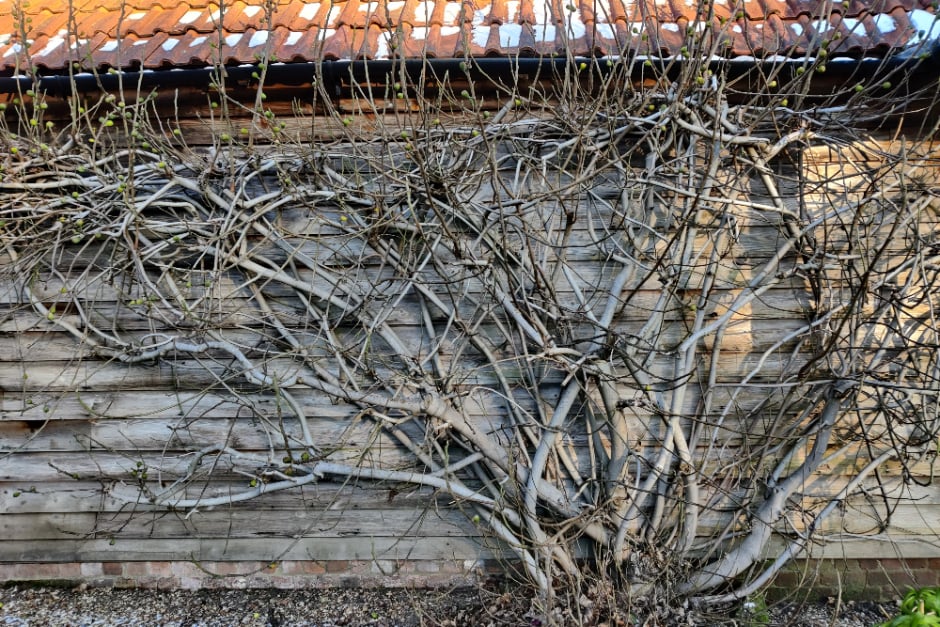
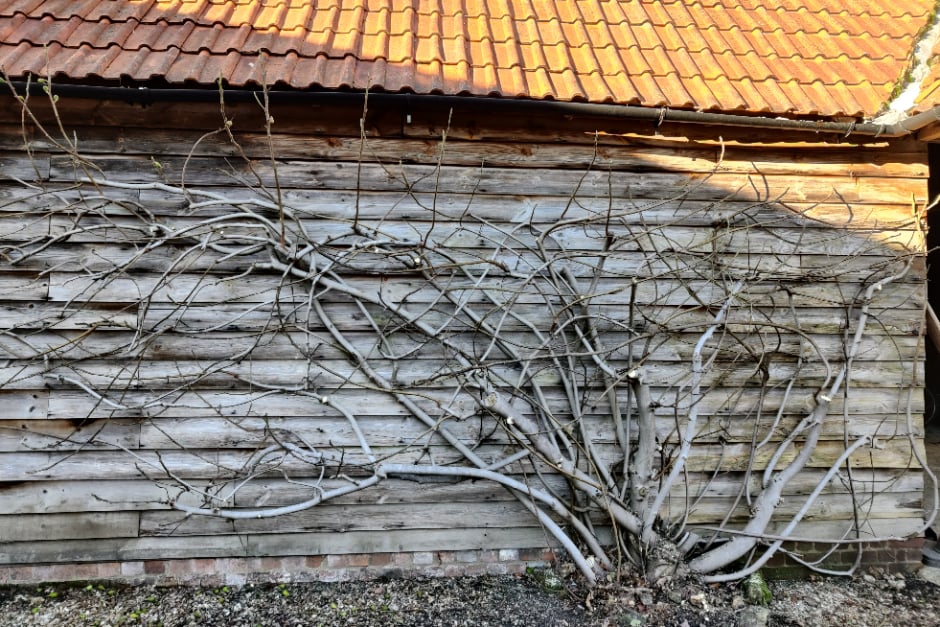 The plant will usually produce a second crop during the summer, but sadly these never come to much. They are thwarted by the UK climate, and the frustrating semi-ripe figs can linger on the plant promising to mature – but they just don’t. I remove them, otherwise they fall off and splat on my patio. But you can leave them for the wildlife if you like.
The plant will usually produce a second crop during the summer, but sadly these never come to much. They are thwarted by the UK climate, and the frustrating semi-ripe figs can linger on the plant promising to mature – but they just don’t. I remove them, otherwise they fall off and splat on my patio. But you can leave them for the wildlife if you like.
Fig trees are known for sending up suckers from the base – these will be sapping energy from the plant and are best removed. Just cut them off at the base.
You may also be interested in
Pick of the crop
 Look for the RHS Award of Garden Merit (AGM) when buying vegetable seed or small plants. You can also download the RHS lists of recommended cultivars.
Look for the RHS Award of Garden Merit (AGM) when buying vegetable seed or small plants. You can also download the RHS lists of recommended cultivars.
About the author – Adrian Thorne
Adrian Thorne is an RHS Horticultural Advisor with a garden on heavy clay, a family and a dog that enjoys digging up plants. He has become increasingly interested in growing his own food and low-carbon gardening over recent years.

